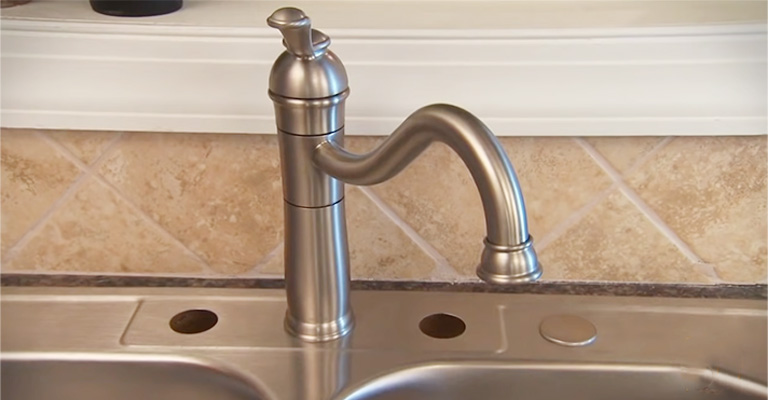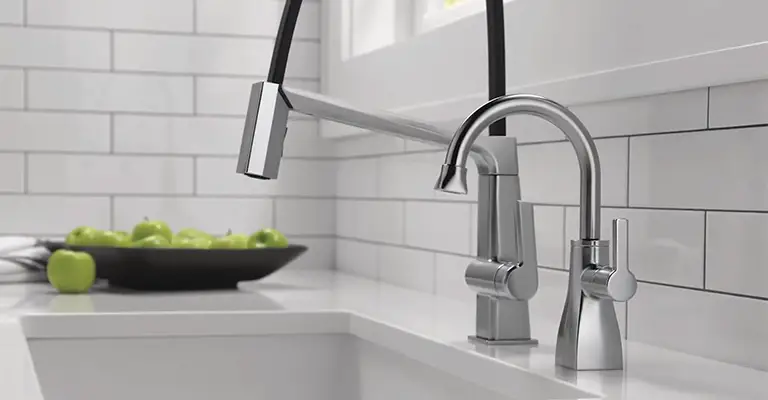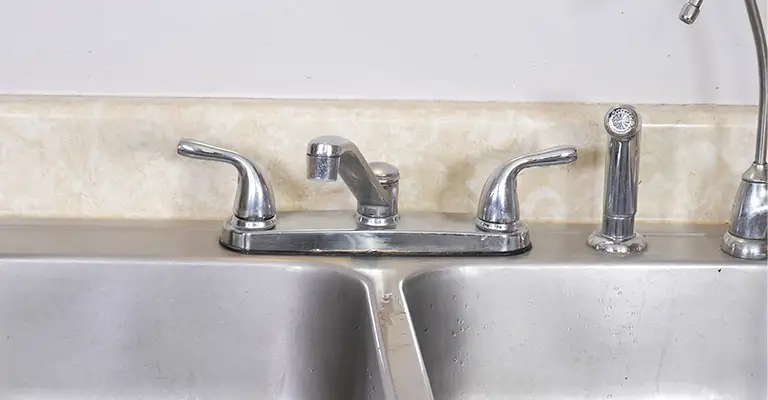When you step up to a sink, whether it’s in your kitchen, bathroom, or any other area in your home, you often don’t give much thought to the faucet.
You simply turn the handle, and water flows, right? But have you ever wondered which side of the faucet is hot and which is cold?
In most standard faucet configurations, the convention is that the left side of the faucet handle controls hot water, while the right side controls cold water.
Left = Hot Water
Right = Cold Water
This convention is widely followed in North America and many other parts of the world.
However, it’s important to note that this convention may not hold true in all cases, especially with some single-handle faucets or in regions with different plumbing standards.
So, it’s a good practice to check the labels or markings on the faucet handles, if available, to confirm which side dispenses hot water and which side delivers cold water in your specific faucet.
Which Side is Hot and Cold Water?!
If you turn on an extremely hot tap by mistake in a new place and are not prepared, it can be quite punishing.
At home and at work, it’s not a huge issue (other than getting muddled up from time to time), but in a new place, it’s quite punishing and painful.
It is obvious here that you have to ask why the tap is so hot, and it raises concerns about its safety – especially for children.
In public restrooms, I’ve seen plenty of signs warning that hot taps are possible, but they aren’t always present.
You can’t really rely on the taps having indicators to tell you which is hot or cold since they don’t always have any.
Due to the fact that I mentioned kids, some people suggest putting the hot tap on the left, since it is usually the farthest from a child’s reach.
If they could get their hands up to the sink, surely they could reach either tap?
Is it the same for the blind or partially sighted? Can they expect to be scalded by a hot tap because they assumed one was on the other side?
These are the types of situations that support the idea of having a US & UK standard. The LEFT side is the international standard. Left is hot, right is cold.
Why Is the Hot Water On the Left? – It’s All About History!

When indoor plumbing was introduced in the 19th century, the taps were positioned in that position.
Hand pumps supplied cold water to the home, and that was all that was available.
Right handers are most likely to use the sink on the right side, so the pump was positioned there.
It was only logical that this hot water tap would be placed on the left hand side of the cold water tap when hot water was introduced.
Since most people are right-handed, the hot tap is on the left, and the cold tap is used most often, the common sense answer is that it is on the left. What if it’s not? It’s a whole other story!
Currently, there’s no law requiring a tap to be placed in a particular direction in the UK.
There is a different rule in the US as Uniform Plumbing Code specifies that faucets “shall be connected to the water distribution system in such a way that hot water corresponds to the left side of the fitting.”
To assist elderly and disabled people (especially the blind) to identify which tap is correct, it is recommended to have the hot tap on the left.
It’s probably a good idea to install the hot tap on the left when installing new taps. If you use taps in public, never assume that the left hand tap is the hot one.
While it probably will in the vast majority of cases, there are those places that will buck the trend (such as my house). You see, that’s the confusing part of our country.
What’s The Most Popular Side In The UK?

As I wrote this post, I decided to do a bit of research to find out which position the most common bathroom tap is in homes throughout the UK.
My surprise was that such a simple question sparked so many responses, as this is a hot button issue.
I guess I’m a bit of an oddball because the majority of bathrooms have the hot tap on the left of the sink. The only exception appears to be the guy with the middle tap.
In closing, I would like to point out that some of the comments we received supported some of my points earlier;
“Hot taps should always be on the left, so that blind people can find them. Many parents prefer the right side of the bath if it’s the farthest away from the edge of the bath to prevent children from reaching it.”
Hot taps should be farthest from children to prevent them from turning them on.”
Again, there’s the kid issue, although I’m not really sure if it’s actually an issue or just people’s expectations.
A Major Conundrums Of Modern Plumbing
One of the major challenges of modern plumbing can be found here.
As always in the US, the left side is hot and the right side is cold. I’m not sure about Europe. The design of faucets has become more complicated as they have evolved.
As a result, single lever faucets were installed, which were fine since the left side remained hot and the right side remained cold.
Eventually, they began to put them to the side. Many manufacturers began marking them – hot & cold when they were put to the side, and even before then.
You can set up the faucets however you like if they are unmarked. No codes dictate that, to my knowledge.
Cold water should be directed toward you and hot water should be directed away when a single lever faucet moves either toward you or away from you.
In my opinion, this method works best with small children due to the fact that they are difficult to reach and it’s easier to pull rather than push – thus cold forwarding.
In order to prevent confusion, it is important to keep them uniform throughout your house.
Regardless of how you place them, people will adjust quickly.
Final Words
The cold water should always be on the right side of the faucet while the hot water should always be on the left side. Single lever and dual lever faucets are subject to this industry standard throughout North America.
At the time of indoor plumbing’s introduction, cold water was the only option that came out of the hand pump. Pumps are typically placed on the right side of sinks since most people are right-handed.
To avoid surprises, the cold/right and hot/left placements are kept. The right side is usually reached for first, which helps avoid accidental scalding by keeping the cold there.








